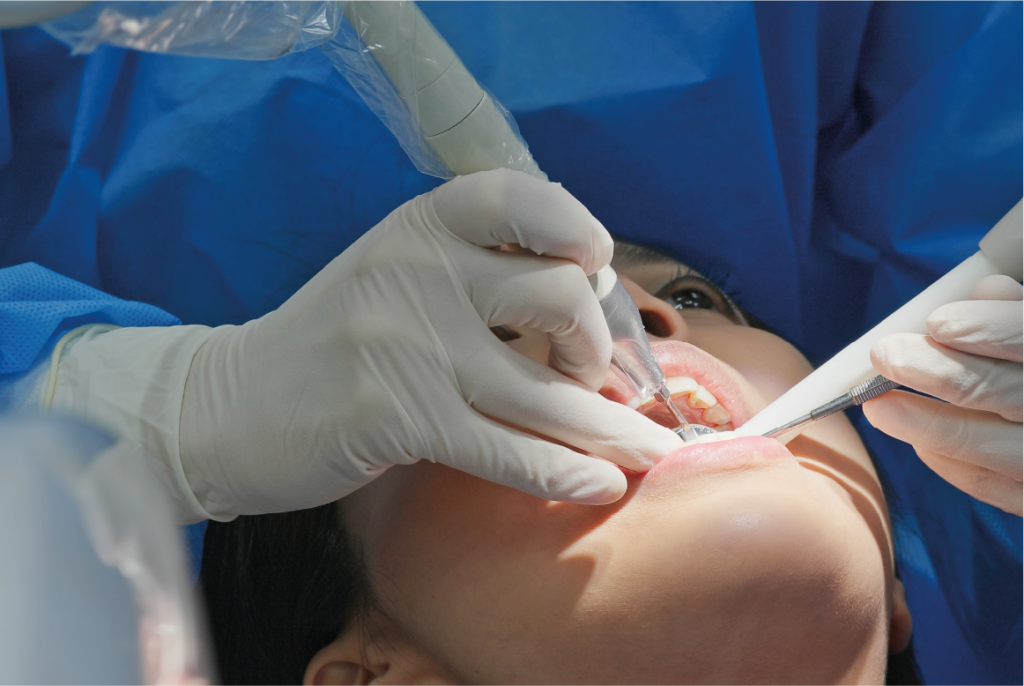Minor surgery
We surgically intervene
on small defects in your teeth
and gums.
We are specialists in minor surgery
Minor dental surgery is a branch of dentistry that involves less complex surgical procedures performed in the oral cavity to treat various conditions. Although these procedures are considered less invasive than major surgeries, they still require the skill and experience of a dental professional.
After any minor dental surgery procedure, patients should carefully follow the postoperative instructions provided by the dentist. This may include avoiding certain foods and drinks for a specific period of time, taking prescription medications for pain or inflammation, maintaining good oral hygiene, and scheduling follow-up visits to make sure recovery is progressing appropriately.


Common minor surgery procedures

Gum graft
Gum recession can expose the roots of the teeth, which can lead to increased tooth sensitivity and increase the risk of periodontal disease.

Gingivectomy
It is a minor surgery that is performed with the aim of removing parts of the gums that are damaged, inflamed or that have excessive growth.

Dental extractions
The extraction of one or more teeth may be necessary due to dental health or space problems in the mouth or to perform more complex dental treatments.

Wisdom teeth extraction
Wisdom teeth are the last molars to erupt in the mouth, but due to the evolutionary decline of the jaw, they usually do not have room to erupt.

Canine fenestration
Dental surgical procedure that is performed when the permanent canine tooth is impacted, that is, it has not erupted correctly in its normal position in the dental arch.

Coronary lengthening
Tooth height is the portion of the crown that extends above the gum line. When this height is insufficient, it can affect the aesthetic appearance of the smile and dental function.

Apicoectomy
This technique is used when root canal treatment has not been sufficient to completely eliminate the infection or when there are persistent problems at the root tip that cannot be treated with other methods.

Microscrews
Small, temporary devices used in orthodontics to provide additional anchorage during orthodontic treatment. They are used when teeth must be moved in a more precise and controlled manner.
Common minor surgery procedures

Gum graft
Gum recession can expose the roots of the teeth, which can lead to increased tooth sensitivity and increase the risk of periodontal disease.

Gingivectomy
It is a minor surgery that is performed with the aim of removing parts of the gums that are damaged, inflamed or that have excessive growth.

Dental extractions
The extraction of one or more teeth may be necessary due to dental health or space problems in the mouth or to perform more complex dental treatments.

Wisdom teeth extraction
Wisdom teeth are the last molars to erupt in the mouth, but due to the evolutionary decline of the jaw, they usually do not have room to erupt.

Canine fenestration
Dental surgical procedure that is performed when the permanent canine tooth is impacted, that is, it has not erupted correctly in its normal position in the dental arch.

Coronary lengthening
Tooth height is the portion of the crown that extends above the gum line. When this height is insufficient, it can affect the aesthetic appearance of the smile and dental function.

Apicoectomy
This technique is used when root canal treatment has not been sufficient to completely eliminate the infection or when there are persistent problems at the root tip that cannot be treated with other methods.

Microscrews
Dispositivos pequeños y temporales usados en ortodoncia para dar anclaje adicional durante el tratamiento de ortodoncia. Se usan en casos en los que es necesario mover dientes de manera más precisa y controlada.


